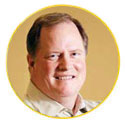Richard “Zippy” Grigonis recently spoke with Shockley about Spanlink, UC and contact centers.
RG: I see that Spanlink is a leading provider of UC and customer interaction solutions that leverages Cisco’s technology. You’re also into applying UC to IP contact centers.
BS: Spanlink doesn’t just resell Cisco UC and brings a value add, solving business issues our customers face. For example, with Spanlink’s SolutionWatch offering, IT can focus on the value chain rather than having to monitor more solutions. SolutionWatch is a proactive service that both minimizes system downtime and supplements monitoring solutions inexpensively. For example, SolutionWatch can detect a hard drive failure nearly instantaneously and send a trouble ticket to IT – or Spanlink’s technical assistance center – alerting them of the failure and letting them know exactly where the issue originated – in this case, whose hard drive failed. In a large, virtual enterprise, you could imagine how beneficial this is. CentralControl is another service offering developed by Spanlink that again, focuses on solving business issues.
CentralControl is a web-based management framework that presents a unified, holistic and simplified interface to the disparate and often-times distributed resources that comprise a customer interaction network.
As for contact centers, Spanlink made a major push into the IP contact center arena in 2000. We’ve created contact center software products that we sell both directly to customers and OEM through companies such as Cisco. We’ve deployed about 1,500 of our IP contact centers on five continents. In October 2007 we spun off our Calabrio Software division, which focuses directly on customer interaction and workforce optimization software for IP-based contact centers. And we’ve been broadening the scope of our business from just being narrowly focused on the IP contact center, to a wider base of unified communications. We view the two as being interrelated.
RG: What are the biggest changes UC brings to contact centers?
BS: Aside from the convergence of the data and voice networks, we’ve been at the forefront of business virtualization, which impinges on UC. We led the industry with customers such as Grainger, which virtualized 500 of their store locations into a single virtual contact center, with thousands of agents across all of those sites. With Grainger we also pioneered a market-based routing algorithm enabling customers to call local resources and get local service even if the office handling the call is 30 miles away. Some companies may not realize that they have a true contact center until suddenly they’re using this technology to tie together many different sites and virtualize their business.
Then there’s the overall unification of applications. While working with many of our customers, we end up with an inseparable combination of convergence, virtualization and unification of applications. We often help companies figure out what the business value is of bringing all of these things together.
One of our customers is a healthcare company that does nationwide health insurance applications for Fortune 500 companies. They want to combine their formal contact center’s resources with all of the informal experts that they’ve got strewn around their enterprise. Customers want to talk about insurance licensing requirements relating to the state in which they live, and contact center representatives must talk about local subjects. Appearing to be ‘local’ is not just informative but helps to establish a personal relationship with the customer. So another major change is being able to improve efficiency and first-call resolution by becoming more efficient in providing the basic bread-and-butter types of services to the customers calling in, or customers you are calling out to, and, secondly, being able to find and connect to an appropriately-licensed expert outside of the contact center to talk to a customer or to provide advice relative to wherever the customer is calling from.
So we’re starting to see more of these kinds of approaches. As soon as you adopt them in call centers, you begin to see more blended UC, and more informal agents tied to formal contact center agents so you can call upon their expertise whenever necessary.
Unified Communications Communications Magazine Table of Contents





